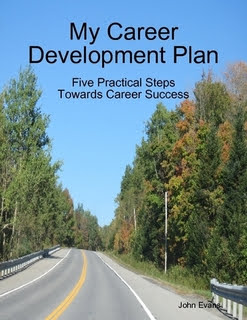Changing career in mid-life becomes easier if you have done some work on your values and your passions. Doing so helps many people to understand and to talk about who they are. Regardless of your career to date, your future decisions about career will be easier and more valid if you have a clear understanding of your own orientation toward work, your motives, your values and your self-perceived talents. Being clear about these helps in focusing career development tactics and enables people to talk confidently about what you will bring to a particular role. My experience as a coach suggests that most people have several passions and that as they get older they make decisions about the passion – or the small number of passions – that are so strongly aligned with their values that they will not give them up easily.
Some people are very clear about their career related values. Others find it helpful to take one of many career assessments. These assessments will help you explore your career interests, skills, your values, and personality. In this post I would like to introduce Edgar Schein’s “Career Anchors”.
Edgar Schein and Thomas De Long developed “career anchors” in the 1970s. They described career anchors as that combination of perceived areas of competence, motives and values that you would not give up: it represents your real self.
Schein’s “Career Anchors” can help you think through your career options and give you a clear understanding of:
- Your own orientations toward work
- Your motives
- Your values
- Your talents
Use of “Career Anchors” also helps people:
- Define the themes and patterns dominant in their life
- Understand their own approach to work and a career
- Provide reasons for choices
- Take steps to fulfil their own self-image
As you accumulate work experience, you have the opportunity to make choices; from these choices you begin to ascertain what you really find important. Dominant themes emerge—critical skills or abilities that you want to exercise or crucial needs or values that dominate your orientation toward life. You may have had a sense of these elements but, until now, you may not have assessed them in a thorough way. However, when changing careers in mid-life this self-awareness becomes vital. Knowing how important these aspects of yourself are and how any given talent, motive, or value relates to other elements of your total personality becomes an important “lens” through which to plan and talk about your career change journey. It is often only when we are confronted with difficult choices that we begin to evaluate and decide what is really important to us.
With accumulation of work experience and feedback comes clarification and insight, providing a basis for making more rational and empowered career decisions. Notice the importance of feedback especially if you have participated in work-based feedback processes and have a recent report that you can re-examine.
Through self-assessment the self-concept begins to function more and more as a personal “guidance system” and as an “anchor” that shapes career choice. Out of this process people begin to talk about careers saying that this role is something they identify with whilst that occupation is not something they could ever see themselves doing. This knowledge keeps us on course or in a “safe harbour”.
As people recount their career choices, they increasingly refer to “being pulled back” to things they have strayed from or, looking ahead, “figuring out what they really want to do” or “finding themselves.” This process leads people to gradually move from having broad goals to a sense of knowing better what it is that they would not give up if forced to make a choice. The career anchor, as defined by Schein and his co-authors, is that one element in a person’s self-concept that he or she will not give up, even in the face of difficult choices. And if their work does not permit expression of the anchor, people find ways of expressing it in their hobbies, in second jobs, or in leisure activities.
Schein and his colleague developed the career anchor concept at MIT. An empirical investigation conducted by Catherine Steele and others and reported to the British Psychological Society’s 2007 Occupational Psychology Conference, concluded that the eight career anchors, as measured through use of Edgar Schein’s “Career Anchors: Discovering Your Real Values” is a valid model with satisfactory internal reliability results.
This tested reliability is important to know because there are many forms of assessment available and not all of them are reliable. I recommend that mid-life career changers make use of the “Career Anchors” approach and find that people do find it beneficial. It is recommended for use in “My Career Development Plan” which you can purchase here
Schein’s approach to Career Anchors included the use of a Career Anchor Interview to be used after completion of the Career Orientations Inventory. I am pleased to advise about the use of the Interview: it is a particularly helpful process that mid-life career changers have found valuable.
“Career Anchors: The Changing Nature of Careers: Self Assessment”, 4th Edition by Edgar H. Schein and John Van Maanen, published in May 2013 contains the “Career Anchors Self-Assessment” or “Career Orientations Inventory”, the simple “Scoring Instructions” and the “Descriptions of the Career Anchor Categories”. Guidance on the user’s “Next Steps” and “Choices” are also included.
